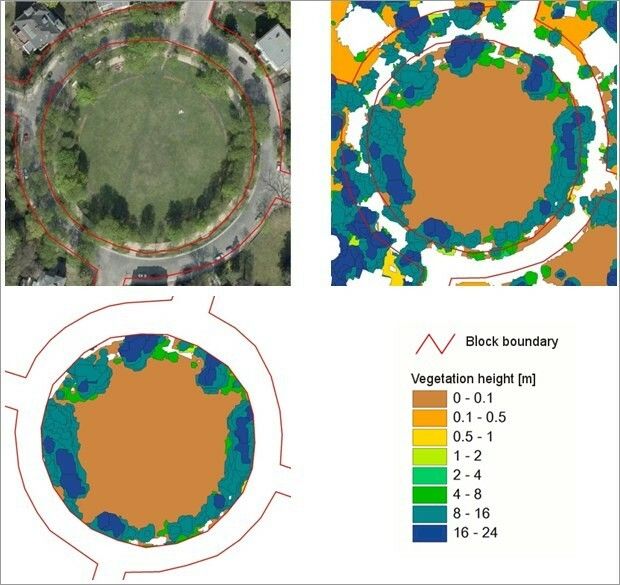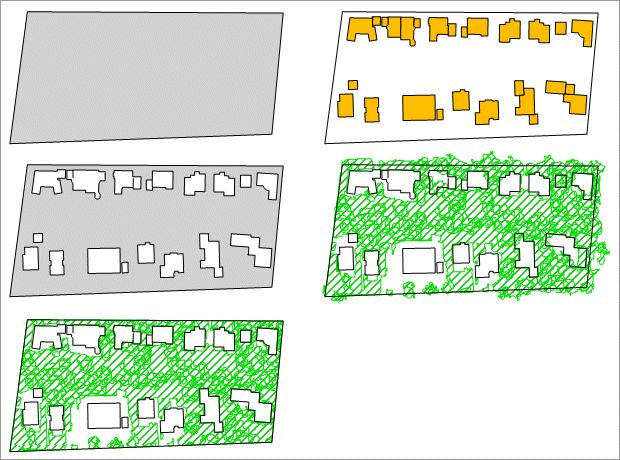To calculate the green volume, the adjusted data sets of vegetation heights were intersected with the ISU5 areas (block, block segments and road areas) (intersections formed, Figure 2) and the vegetation data was transferred to the ISU5 areas by area.
Green volume of blocks, block segments and road areas
Each ISU5 area was used to trim each corresponding vegetation area. The area size of the trimmed vegetation area was then multiplied by its mean height (Figure 2) (= green volume of a trimmed vegetation area).
The sum of these for each ISU5 area yields the green volume of all individual blocks, block segm**ents and road areas (m³). Dividing the green volume by the respective area sizes (m²) then results in the respective green volume number for each area (m³/m²).
The green volume number also serves as the mean vegetation height relative to the entire block / block segment or the non-built-up parts of the block / block segment or road area (m).


